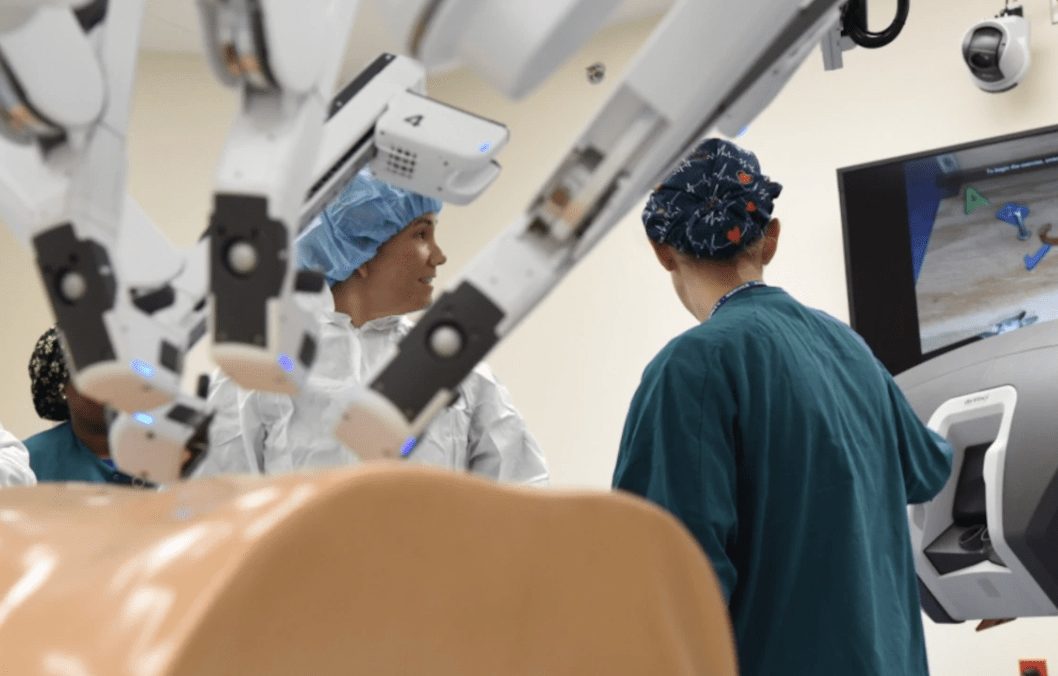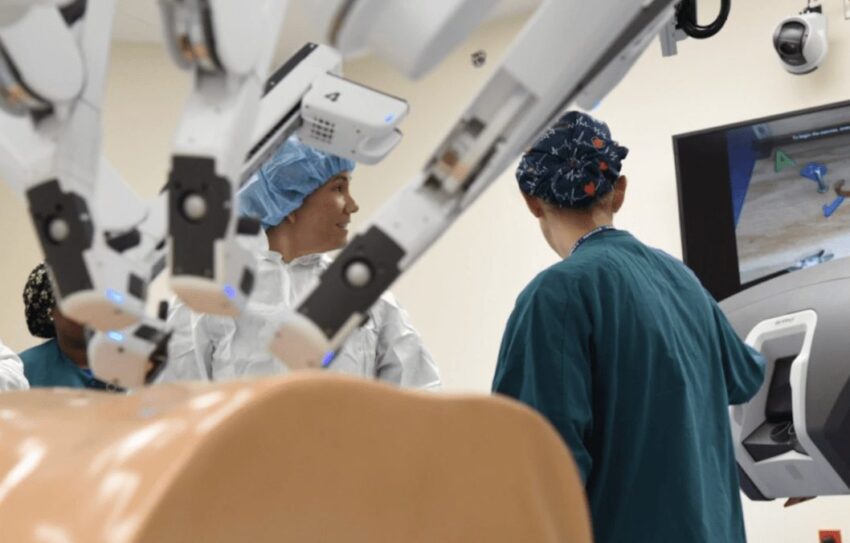
The world of spine surgery has seen incredible changes during the past several years. In a short period of time, we have witnessed the introduction and routine use of sophisticated navigated robotic systems that help surgeons place spinal instrumentation, the evolution of dynamic stabilization and disc replacement technologies, and more recently, the rise of artificial intelligence (AI) and machine learning (ML) algorithms in the spine service line. AI and ML have the unique fortune of being able to potentially revolutionize and enhance the quality and delivery of spine care to healthcare systems, providers, and patients.
In a review article recently published by our multi- center spine research team at the Cleveland Clinic, Mount Sinai Hospital, and Mayo Clinic; we found that AI/ML could improve spine care through (1) pre- operative patient work-up, patient selection, and outcome prediction, (2) quality and reproducibility of spine research, (3) perioperative surgical assistance and data tracking optimization, and (4) intraoperative surgical performance.
From the surgeon’s perspective, we now have a powerful tool that will help us improve surgical indications, reduce complications, enhance the power and quality of our research, and minimize heterogeneity in outcomes. From the patient’s perspective, AI/ML maximizes value of state-of-the-art spine care by improving quality and minimizing costs. Furthermore, the patient’s experience is enriched with the knowledge that their surgeon is well-versed in cutting-edge technologies and spine innovation.
AI/ML are being developed to meet a growing need to improve the quality of spine care while simultaneously decreasing costs. This is because spine care is expensive: annual expenditures in the United States currently average approximately $110 billion in direct costs. Healthcare costs are spiraling out of control and Medicare reimbursements are facing billions of dollars in planned cuts over the next several years. Physicians are facing an increasingly difficult environment of decreasing reimbursements, increasing payer denials, and public reporting of the utilization and quality of care.4 Without a change in our current financial trajectory, we will soon be forced to make major cutbacks in the quality and delivery of spine surgical care.
For example, imagine you are patient with low back pain and sciatica due to a “slipped” disc (spondylolisthesis) in your lumbar spine. You tried six weeks of physical therapy, pain medications, and maybe even an epidural steroid injection. Nothing provided long-lasting relief of your pain. You are referred to a spine surgeon who believes you are a good candidate for surgical intervention. This is the problem: there are many different ways to treat a spondylolisthesis, including (and not limited to), laminectomy, laminoforaminotomy, laminectomy with in-situ posterolateral fusion, laminectomy with instrumented posterolateral fusion, transforaminal interbody fusion (TLIF), anterior lumbar interbody fusion (ALIF), lateral interbody fusion (LLIF), or some combination of all of the above. While there is evidence to support certain treatments over others, a surgeon’s choice in treatment is often dictated by training, experience, and personal performance.
It is difficult, if not impossible, for surgeons to reconcile and weigh all of this data and his or her personal performance when indicating such a patient for surgery. AI/ML can assist surgeons with this clinical decision-making. In this setting, AI could assist surgeons in identifying good surgical candidates, advise the surgeon on operative approaches, and predict the likelihood of success, cost, and/or payments of various treatments. These innovative approaches could allow for a stronger guarantee of optimized patient outcomes in certified surgical candidates through ensuring proper procedure selection. Simply stated, AI/ML algorithms are useful as an objective, data- driven tool that allow surgeons to confidently say that a patient is getting the best quality of care for his or her specific spine problem.
As AI/ML becomes increasingly sophisticated, there will likely be drastic changes in the operating room. While intraoperative AI platforms are being developed and mostly experimental at the time of this writing, the two most prominent technological advances in the modern era of spine surgery, namely, neuronavigation and surgical robotics, are especially well suited to AI.8 Augmented reality and robotic-assisted spine surgery are generally utilized in minimally-invasive or complex spinal deformity operations. Since image processing is a strength of AI programs, neuronavigation stands to benefit from evolving AI platforms. By integrating patient- specific anatomy, AI-enhanced image processing allows for precise reconstruction of relevant spinal anatomy during surgical planning. This will allow surgical robotics to further increase precision, thereby lowering potential complications from human error.
Advanced navigation technologies allow surgeons to reconstruct patient-specific, 3D-renderings of the spine that provide real- time positional feedback during the operation. For surgeons, it provides us with a “digital roadmap” to the patient’s spine. The operating team can also use AI powered image guidance to direct precise spinal hardware placement. Multiple studies have established that these robotic- navigation systems not only improve accuracy in hardware placement, but also improve timeframe. Once the AI/ML is built based on historical data collected at the Cleveland Clinic, we will prospectively evaluate it during routine practice at the Center for Spine Health. We are very excited about the launch of this initiative and its potential transformative implications in the world of spine surgery!
In conclusion, AI/ML has emerged as disruptive technologies that will revolutionize spine care by reducing expenditures and improving its delivery. AI can help clinicians and hospital centers define the quality and cost of care, improve outcomes, and mitigate downrange financial exposures. AI can also collect, process, and analyze volumes of patient information to extract valuable clinical information for studies. Therefore, the incorporation of AI/ML algorithms in spine surgery is becoming ever-more important.

by Jonathan J. Rasouli, MD, Neurosurgeon & Spine Surgery Fellow, Cleveland Clinic
Read more in our latest Spine Health Journal here.



